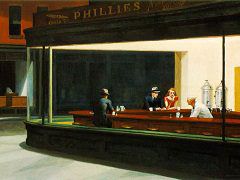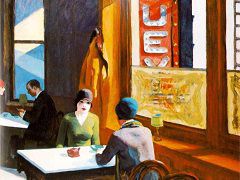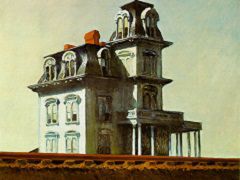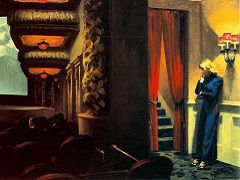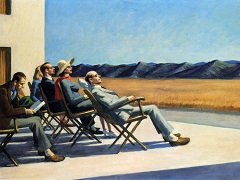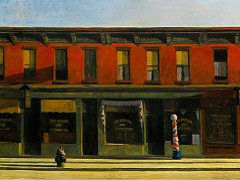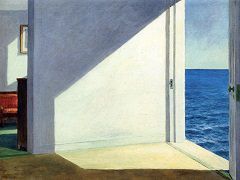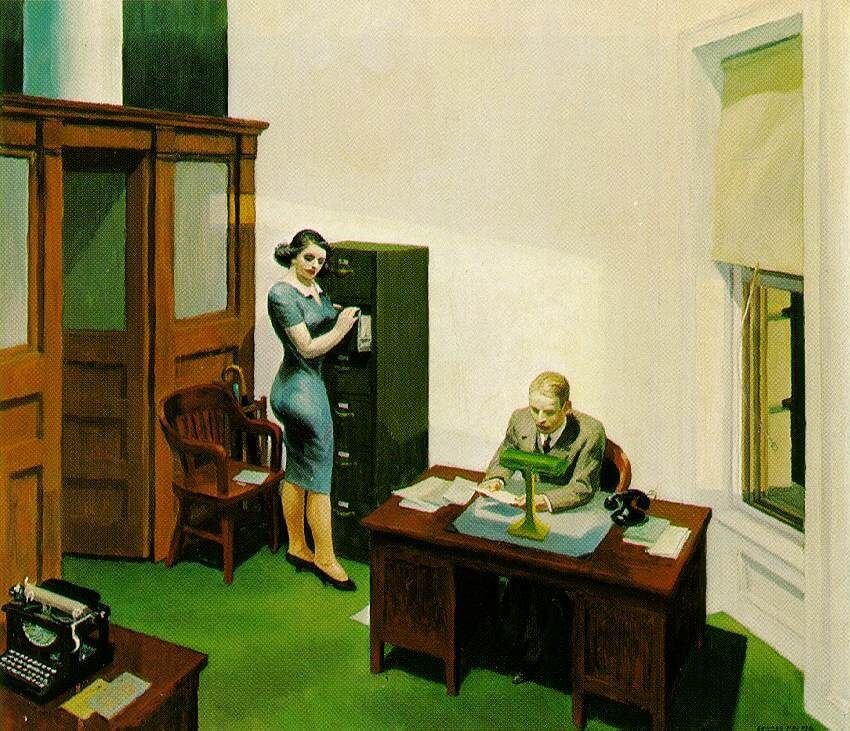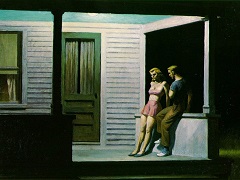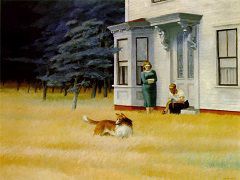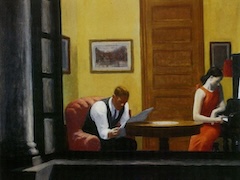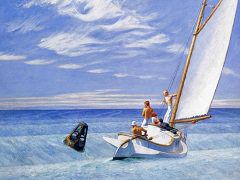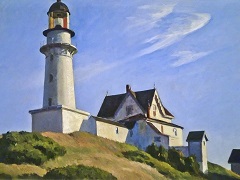Manhattan Bridge Loop, 1928 by Edward Hopper
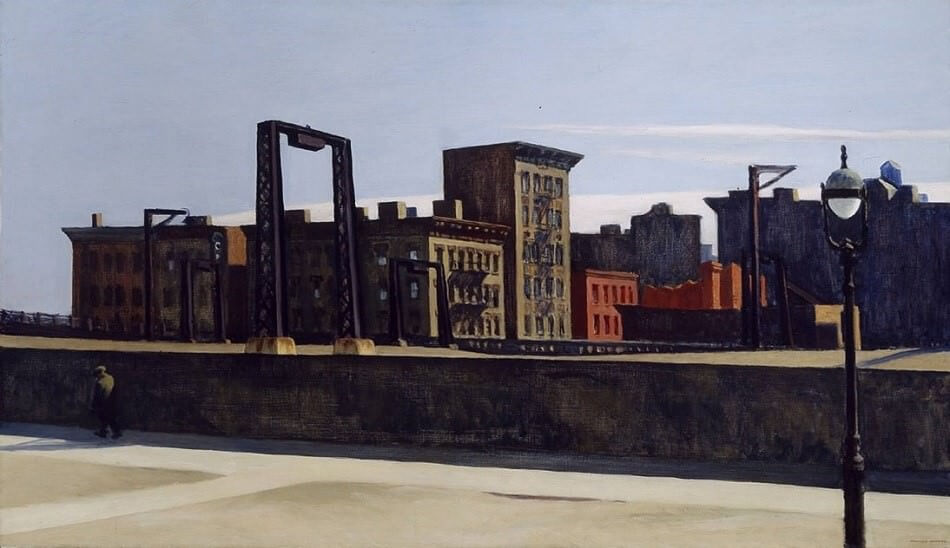
Although Manhattan Bridge Loop, 1928 seems to be a straightforward image of an urban scene, Hopper intended it to be more. "My aim in painting," wrote Hopper, "is always, using nature as the medium, to try to project upon
canvas my most intimate reaction to the subject as it appears when I like it most; when the facts are given unity by my interest and prejudices. Why I select certain subjects rather than others, I do not exactly know unless it
is that I believe them to be the best mediums for a synthesis of my inner experience."
In the 1920s Hopper created several paintings that deal with the line of buildings constituting a city block. Architecture plays a major role in much of his work. He admitted that when he was making illustrations, "I was always
interested in architecture, but the editors wanted people waving their arms." Frequently his buildings are protagonists that personify cultural and social concepts.
Hopper places the viewer off to the side and then letshim or her question the importance of the scene and the reason for its being painted. The horizontal format of this painting is crucial to its meaning. The breadth of the
picture acts as a wide-angle lens to emphasize the fact that cities can be uneventful and dehumanizing. Choosing the proportions for a painting was a matter of great concern to Hopper. Unlike many artists who use standard sizes,
Edward Hopper carefully considered the proportions for each work.

